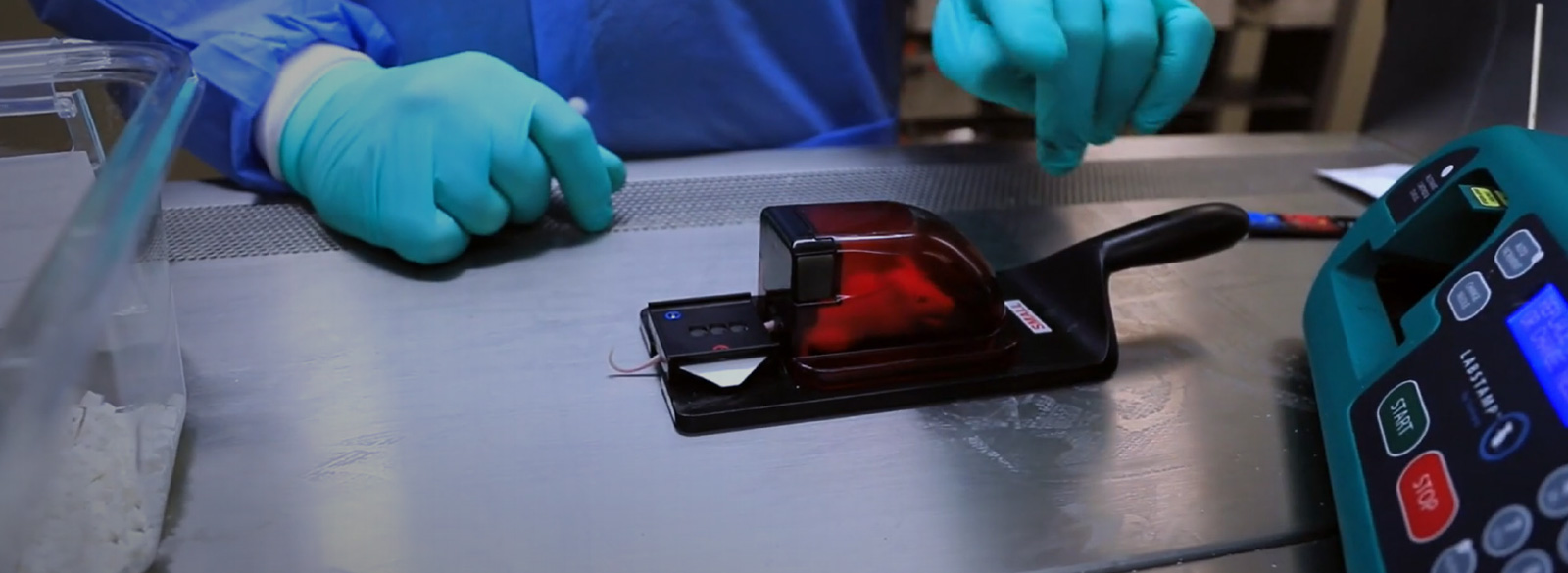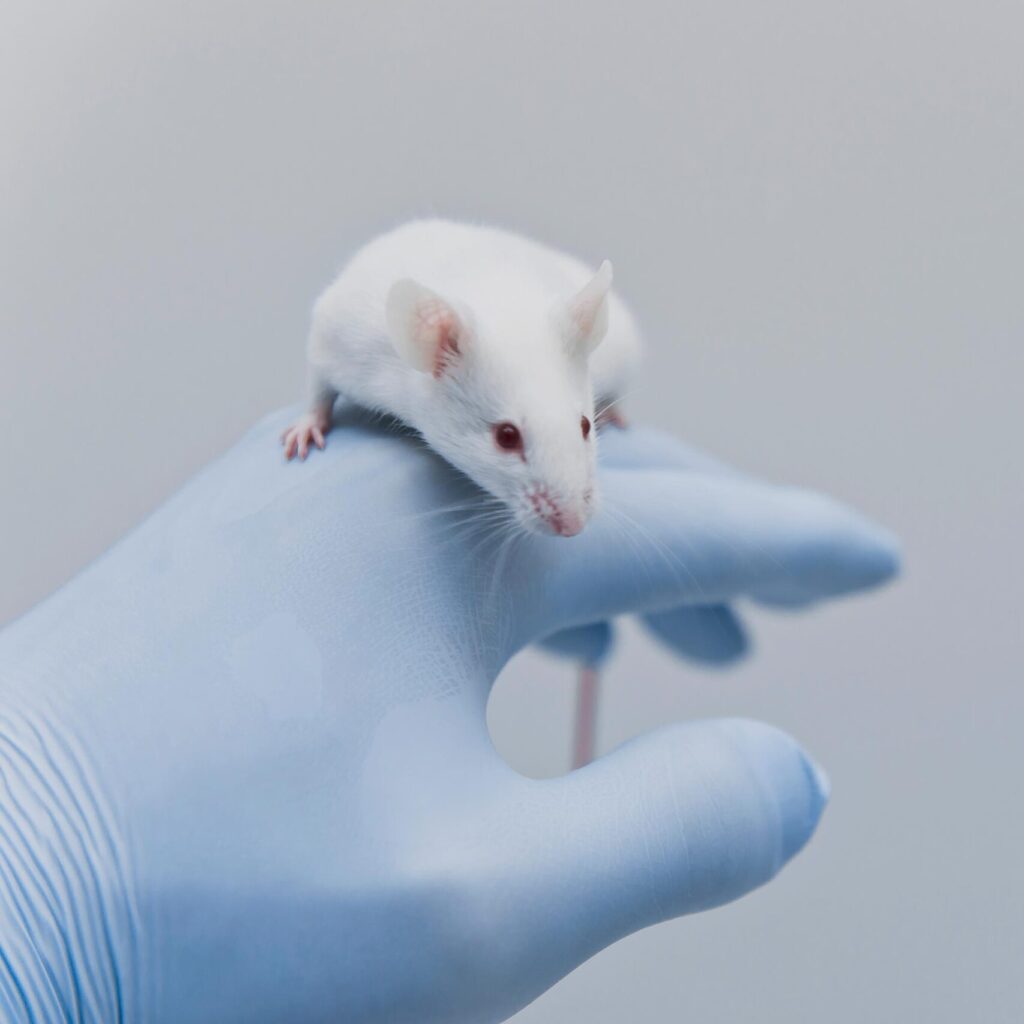
APPLICATIONS
Mouse Ear Punching VS Labstamp
COMPARISON
Mouse Ear Punching: Rodent Identification
Mouse ear punching is a common method deployed by preclinical research scientists across the globe. In recent years, due to various in-depth studies, the welfare of mice identified using this method has come into question.
Throughout the longevity of a preclinical research study, the behavior and appearance of a research rodent is monitored under regulatory protocols. The aim being that the monitoring study will deduce enough data to assess the preclinical safety of the investigational new drug (IND).
The only way to achieve such data is through a rodent identification method, which can often take the form of mouse ear punching.
Various research papers have addressed the complications associated with mouse ear punching, with many focusing predominantly on the welfare of the mice. One major downfall of the mouse ear punching method is that the punches can heal, and in time, identification can be lost, and the accuracy of reading IDs is risked.
Mouse ear punching, ear clipping or ear notching are all synonymous with the same method, which involves a unique area or shape or cut in the ear of the rodent.
Mice do not need to be anesthetized for ear punching, which is often why this rodent identification method is cost effective and easy to implement by Technicians. It also requires fewer instruments and consumables for application than the counterpart method using ears, namely ear tagging.
Questioning mouse ear punching
Why ear punching mice?
In the instance of mouse ear punching, a small hole is punched through the tissue in the middle of the pinna. The method of ear notching takes tissue from the edge of the pinna.
The primary concerns that have arisen with ear-based methods of rodent identification surround pain and discomfort experienced by the research subject itself.
The concern with ear punching mice?
Although other additional concerns arise, including the risk of infection and tearing of the ear, the welfare of the research mice can cause further consequences to the integrity of preclinical research if impacted.
Identification is an undisputable necessity for preclinical research but modern advancements have brought to market more innovative and ethical methods of ID.
These new avenues rule out the use of the mouse ear punching entirely, which is often the cause of thermoregulation issues as well as instances of misidentification.
With all preclinical research projects seeking ethics approval as an essential requirement, institutes and facilities should begin to assess their current methods of ID as well anticipate a drill down on acceptable methods for in vivo research, until it is replaced entirely.

Cases of complications encountered
The first and foremost issue that is caused by ear punching, is the pain and stress associated with a non-anesthetised application method. Mice exhibit behaviors of increased grooming and self-scratching, according to a journal entry from June 2021, both of which are predominant signs of discomfort.
Long-term anxiety has been displayed by mice in a research paper from the Wayne State University in January 2023. Mice subjected to ear punching demonstrated avoidance towards handlers and hyponeophagia (reduced interaction with novel objects).
A journal entry published in October 2022 addressed an uncommon, yet important issue faced with ear punching in mice. A particular study subject in the Mouse 3 category had a single left ear punch which led to the immobilisation of the mouse due to the fore left leg being fed through the ear punch.
In this instance, it is advised to opt for notching over punching to mitigate such welfare issues. Paper reference available here.
With notching, however, there comes another series of unique issues. This includes the application instruments becoming dull quickly, causing damage to the site of notching if not replaced regularly.
The larger issue associated with the ID method
Handling time is much higher in studies where ear punching is deployed. This is because not only does the mouse need to be restrained for the application of the punch to avoid errors or tears, but the animal is also then handled for routine monitoring.
Issues are also faced with tissue regrowth, where further handling is required to regenerate the punch. This not only leads to unclear IDs but also additional handling.
Handling is closely associated with further welfare complications and stress. All of which leads to errors in research data! Stressed mice cannot demonstrate legitimate and accurate representations of behavior when influenced by their anxieties and stresses. This brings the integrity of research data into question.
Ear punching mice vs tattooing tails
Comparing the traditional, and still well utilized method of mouse ear punching, with innovative and continually evolving tail tattoos is easy. When we focus on three main aspects of identification, we can see that the ID should be unmistakeably readable. The ID should also be applied in the least invasive way possible, in order to safeguard the welfare of the research subject. Finally, the ID should be obviously unique, permanent and pose no threat to the mouse itself.
Does mouse ear punching achieve this? The answer is no, as highlighted in this comparison.
Tail tattoo methods, specifically Somark’s Labstamp, do however achieve all of these requirements and then some.
Labstamp is a permanent tattoo placed at the base of the tail, through a minimally invasive tattoo method. The mouse is not handled during application, rather safely restrained in a red dome of which the colours calm the mice. From here the tattoo remains readable throughout the mice’s lifetime, with the location of the tail tattoo being easy to inspect from a distance.
Labstamp not only offers 20,000+ unique ID patterns of 3 alpha-numeric sequences, but the application process is a mere 24-30 seconds. Numerous studies have been conducted using Labstamp and we have never seen any reports of the tattoo fading, when applied properly according to the SOP.
This minimally invasive, permanent method of rodent identification can also help labs to achieve steps towards automation, efficiency and data accuracy. Not to mention, Labstamp meets the requirements of many ethical agencies and regulatory bodies.
This method poses no risk of potential injury unlike mouse ear punching, where we’ve seen numerous reports of ear tearing during social interactions or fights. Looking to mitigate the risk that ear punching could compromise your preclinical research? Discover Labstamp today.
